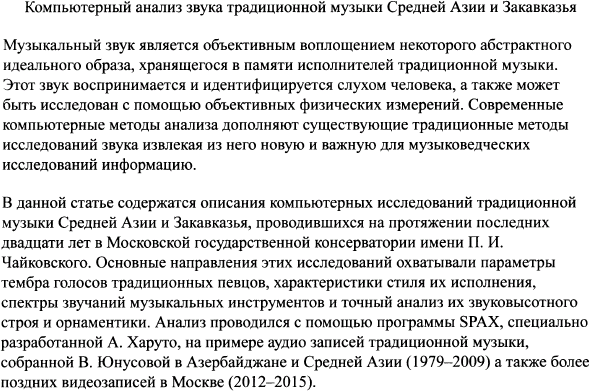No CrossRef data available.
Published online by Cambridge University Press: 06 December 2018
This article deals with two examples of a large number of computer-assisted investigations of Central Asian and Caucasian traditional music conducted over a twenty-year period at the Moscow P. I. Tchaikovsky Conservatory. The main objectives of these investigations have included: (1) analysis of sound spectrum structure and timbre; (2) melody extraction and the subsequent analysis of its pitches and intervals; and (3) analysis of performing style. Today, the study of performance style is common in both modern musicology and ethnomusicology. In oral traditions, performance style and individual interpretation are of primary importance because they form the final product. Usually, descriptions of performance of traditional music contain some colourful but inexact terms that try to portray the style of performance, the timbral palette, and the pitches and intervals. A properly designed computer programme, on the other hand, can provide accurate and exact measurements and indications of basic features of the sound.
